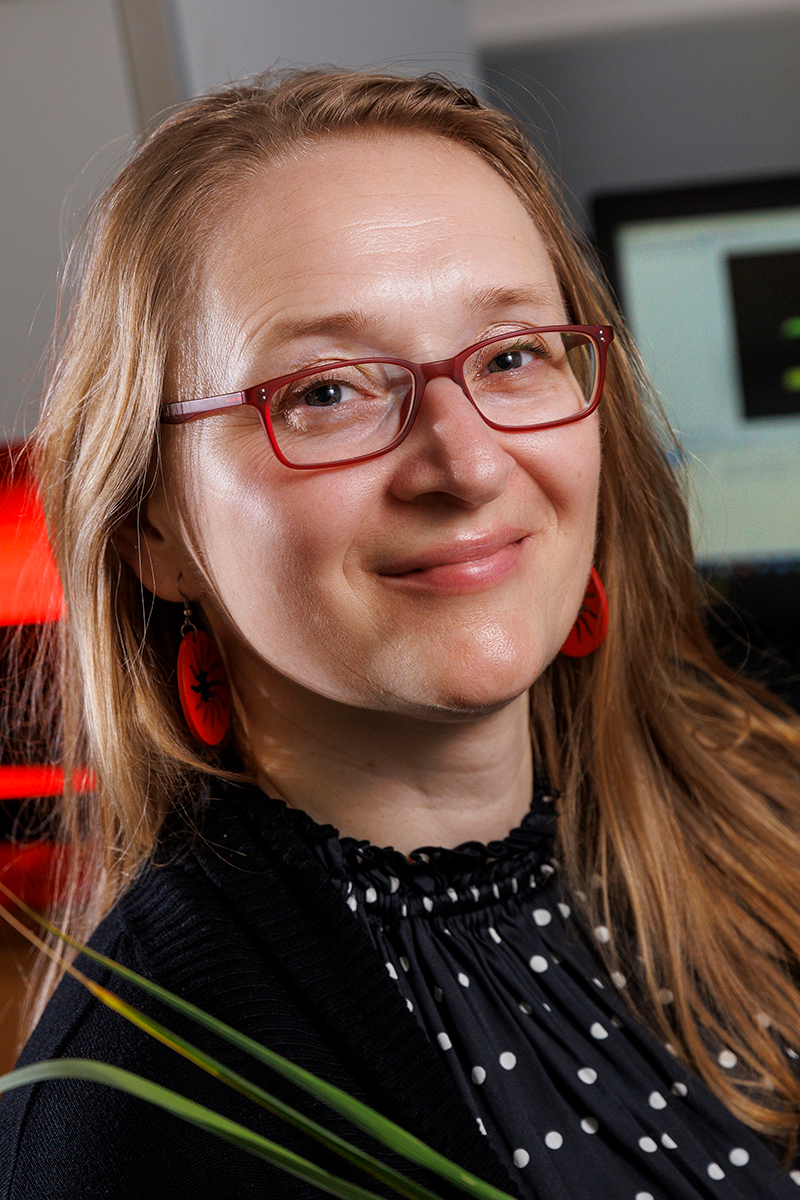Sentinel Fertigation announces $1.2 million in seed funding from Invest Nebraska, others
Lincoln, Neb. — Sentinel Fertigation, a technology company that has developed a platform to quantify nitrogen status in crops to anticipate fertigation needs, announces the close to an initial seed fund. The fundraising round includes investors from Invest Nebraska, Burlington Capital Ag-Venture, Nebraska Angels, Proven Ventures, and several angel investors across the nation.
Read Sentinel Fertigation announces $1.2 million in seed funding from Invest Nebraska, others
Student Research Days competition winners announced
Lincoln, Neb. —The Office of Research and Economic Development, Office of Graduate Studies and the Office of Undergraduate Research sponsored four poster sessions for students to present their work April 11-12.
NRT director leading ag network from Canada to Mexico
Lincoln, Neb. —Craig Allen, NRT director, now heads an international network connecting agricultural networks across Canada, the United States and Mexico to better research agricultural systems and their resilience.
“We will over time develop a research agenda and, with the data from this network, start large-scale analyses that couldn't be done just within each individual network,” Allen said.
NRT student leads landowner workshops in Denton Hills
Lincoln, Neb. —Daniel Morales, an NRT master’s student studying natural resources management, led workshops in the Denton Hills on February 4 and April 28 to hear landowner concerns and gain experience in community engagement.
“I’m sure in my future career, I’m going to deal with stakeholders in managing landscapes, so getting that experience now is definitely very important,” he said.
NRT student publishes on method of rating ‘stakeholder agency’
Lincoln, Neb. —For NRT master’s student Kate Bird, her first publication all came down to means, motive and opportunity.
She and the 12 other authors on the journal article had worked together for a year and a half in a National Science Foundation program for graduate students, Innovations at the Nexus of Food, Energy, and Water Systems—Educational Resources.
Read NRT student publishes on method of rating ‘stakeholder agency’
Eight-year study suggests ‘mob grazing’ may limit livestock growth
Lincoln, Neb. —Welcome to Pocket Science: a glimpse at recent research from Husker scientists and engineers. For those who want to quickly learn the “What,” “So what” and “Now what” of Husker research.
Read Eight-year study suggests ‘mob grazing’ may limit livestock growth
JBS USA supports new Feedlot Innovation Center with $700,000 gift
Lincoln, Neb. —JBS USA, a leading global food company, has made a gift of $700,000 to the University of Nebraska Foundation to support the University of Nebraska‒Lincoln and its plans for a new Feedlot Innovation Center near Mead.
Read JBS USA supports new Feedlot Innovation Center with $700,000 gift

Glowacka to use phenotyping to research cold-weather resistance in miscanthus
A University of Nebraska-Lincoln biochemist is using plant phenomics techniques in novel ways to further her research.
Katarzyna Glowacka, assistant professor of biochemistry, received a five-year, nearly $1.4 million grant from NSF’s Faculty Early Career Development Program. She will delve into the role non-photochemical quenching (NPQ) plays in enabling miscanthus to fend off cold-induced damage.
Read Glowacka to use phenotyping to research cold-weather resistance in miscanthus

Plant Phenomics Community Feature: Jinliang Yang
Seven questions with Jinliang Yang
Jinliang is an Assistant Professor of the Department of Agronomy and Horticulture.
Analysis yields insights into adaptation of high-altitude primate
Lincoln, Neb. —For all the focus on the hourglass-shaped patch of scarlet skin that graces its otherwise furry chest like a superhero’s crest, the gelada monkey’s soaring habitat is what interests Nebraska’s Jay Storz and many of his fellow biologists.
Read Analysis yields insights into adaptation of high-altitude primate







